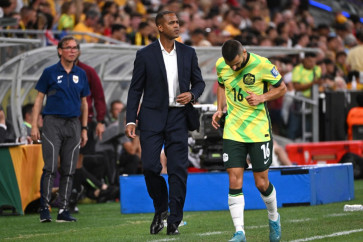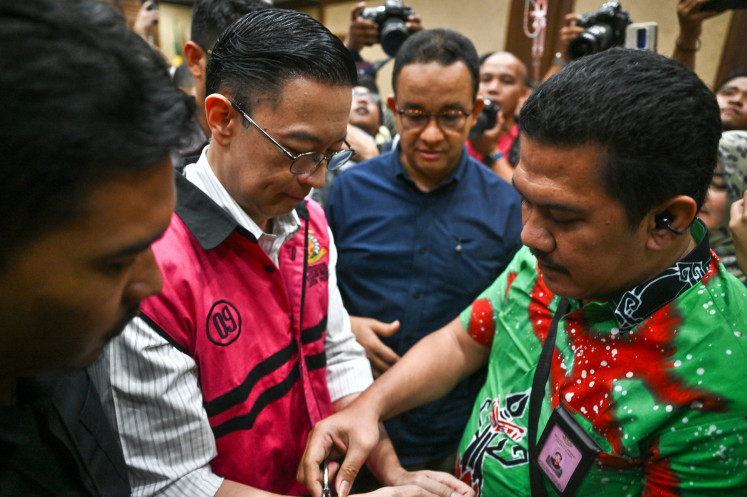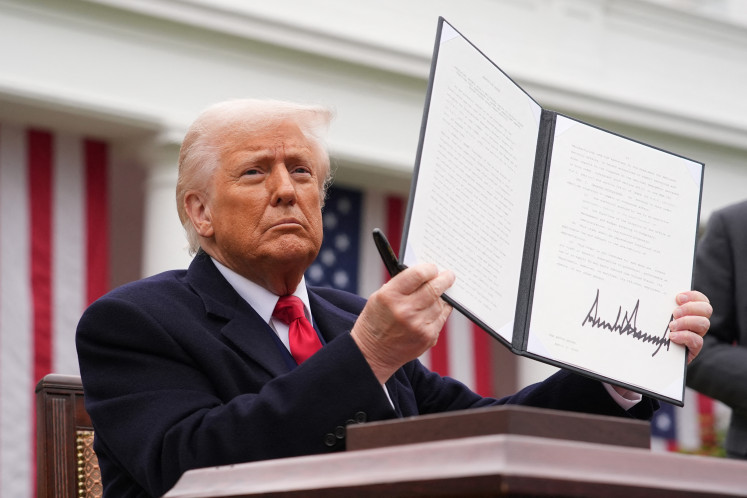Popular Reads
Top Results
Can't find what you're looking for?
View all search resultsPopular Reads
Top Results
Can't find what you're looking for?
View all search resultsMontessori; child centered education
Throughout Indonesia and especially in Jakarta there are a lot of schools that promote themselves as “Montessori” schools
Change text size
Gift Premium Articles
to Anyone
T
hroughout Indonesia and especially in Jakarta there are a lot of schools that promote themselves as “Montessori” schools. However, some of these “Montessori-oriented” schools are not even slightly related to the Montessori philosophy. This situation is caused by the fact that Montessori is not a registered name, which results in the situation where anyone can set up a school and call it a Montessori school even if there are no Montessori trained teachers or materials. For the innocent parent it is hard to make a choice, because there is such a wide range of so-called Montessori schools on the market.
Maria Montessori was born in Italy in 1870. She began her professional life as a doctor of medicine. When she got older, after having a lot of medical experience, she became interested in education, philosophy, psychology and anthropology. This was the basis for her interest in learning.
During her study as an educator, she found that when children with behavior problems were provided with challenges which related to their development, these problematic children became very engaged and interested in learning about these new challenges.
She also found that children generally liked to explore things independently and as a consequence Montessori placed the child as an individual in the heart of all learning. These (and other) findings resulted in the idea that children’s education should be a result of the development of the child. In other words, education should be
child centered!
A very important phrase in the Montessori philosophy is: “Teach me how to do it myself”. For educators this means that students should not only learn to work independently, but more importantly they should help students learn to think independently as well. In her observations Montessori noticed that young children in their drive to become independent use their different senses to learn. A Montessori student chooses his/her own activity, moves from one activity to the next independently, with no fixed “timetable”. Interestingly this strongly relates to the current notion that children should learn by exploring and experimenting themselves. Only through this independent learning will the student learn to solve problem and face the challenges that lay ahead in life.
Another important element of a Montessori school is the Montessori materials. All materials are firstly designed to allow the child to become an independent learner. For example: In a Montessori classroom the materials are child sized and are laid out in an orderly fashion on low shelves that are easily accessible for the students. The materials also focus on the different senses and have a strong hands-on approach. For example mathematic materials, are very concrete, which helps students to learn and understand (abstract) mathematical concepts. The focus of Montessori materials stimulate students to order, classify and make sense of the world around them. As we have empirical proof now, these are all essential elements for learning to take place.
A third element of a Montessori school is that classes by definition are heterogeneous. This means that children of different ages (and therefore vary in their development) are grouped together. So, when looking at a Montessori school children of different ages need to be grouped together in this way otherwise the class is missing an important part of the Montessori approach. Also this element is backed up by recent studies, because research has shown there is an immense positive impact on learning when students are grouped heterogeneously. Younger students learn from watching older students (learning by example) and the older students very much benefit when explaining to younger ones (this is called consolidative learning). Current research has also found that heterogeneous groups allow children to grow positively socially, intellectually and emotionally; also important elements of a Montessori school.
For Montessori it was clear that in order to help the child to become this independent responsible person, aware of whom he-she is, education should be supportive, challenging, rich in experience and mindful of the child’s capacities and needs. And this child-centered education is only possible with knowledgeable, passionate educators with a great understanding of every child’s individual development. As a consequence a Montessori teacher should be able to guide and show the student how to learn new things in such a manner that the child gets ready to learn independently. This can only take place when the teacher systematically observes and assesses the child without interfering too soon or too late.
In a Montessori school, where everything a student does prepares him/her for life, the focus is not on teaching, but on guiding the student to take charge of his/her own learning through independent exploration. Schools now days increasingly try to stimulate this other focus on teaching.
Analyzing Maria Montessori’s philosophy results in the understanding that her pedagogic is indeed very modern and strongly relates to the current “learning to learn” agenda. Her view to put the child’s learning at the center of education, work with materials that are multi sensoric and have heterogeneous groups of students learn together in classrooms are all positively backed up with recent research findings.
Thus Maria Montessori’s “old” pedagogic ideas now backed up by current scientific evidence, focus to improve learning in schools. Of course essential for any innovation in schools are the teachers who, in line with Montessori, need to become more and more coaches and leaders for learning. Yet, in conclusion we need to focus on the child to find the true heart of Montessori education. Ask any child who has been educated in a genuine Montessori school who taught him/her the knowledge and skills and he/she will probably say “I taught
it myself!”










